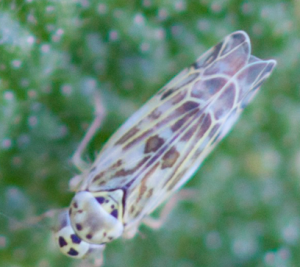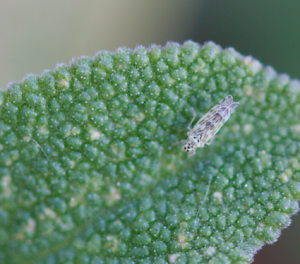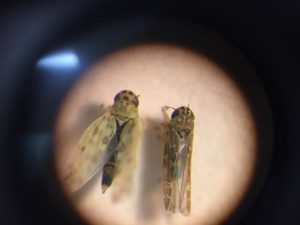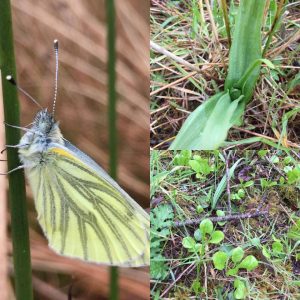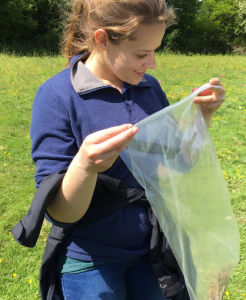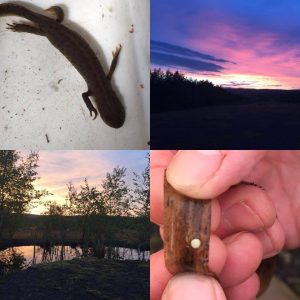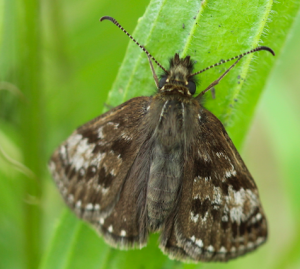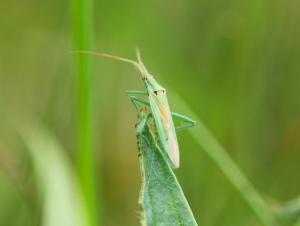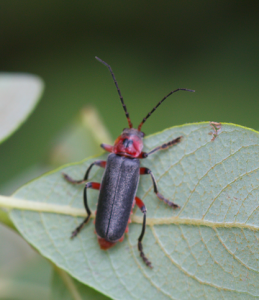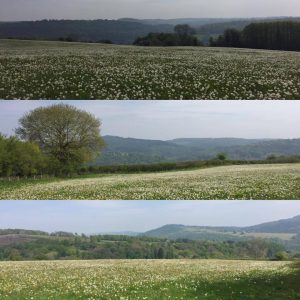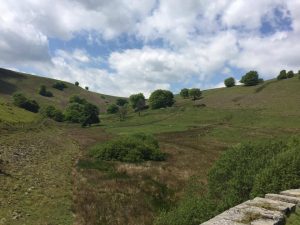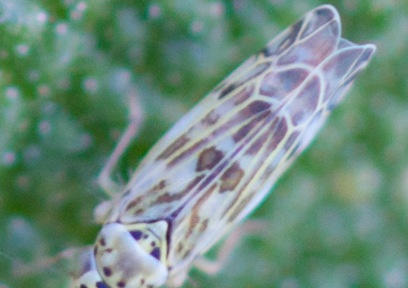
Two months into my traineeship and I feel like I have already learnt so much, at the same time I realise there is so much more to learn and I have only just scraped the surface! The month of May has brought beautiful sunshine and a few soggy days, for me it has meant a lot of ‘botanising’ and exploring the world of hoppers. I am going to share with you what I have been up to, and some of my interesting finds this month.
Hoppers are everywhere… I present to you the Sage Leafhopper Eupteryx melissae. Who knew something so tiny could be so beautifully detailed? The Sage Leafhopper is a very common hopper, yet hardly anyone knows about it. Careful identification from photographs can be made, have a look for the more or less round large spots on the vertex. However, be careful not to confuse this hopper with another, which can also be found on Sage. Eupteryx decemnotata contrasts to the common sage hopper (Eupteryx melissae), instead of three spots, it has three pairs of dark marks. Hopefully you can see this from the photograph below. So, keep a look out on sage, see what you discover!
It was great for my botany mentor Steph Tyler to come to my local area this month, to do some botanising. The visit turned out to be quite exciting. We headed to Bryn Back Park, where Steph was extremely pleased when she came across, what it would seem is quite a rarity – Wintergreen. There were various other lovely finds, including the many orchids that were scattered around, I look forward to returning when they all start to flower, where we can make a full identification.
With the arrival of the glorious weather, Mike (Hemiptera Mentor), Liam (ex Natural Talent Trainee) and I ventured out on a site visit to Pentwyn Farm. We met with Tim Green from Gwent Wildlife Trust, who manages the meadows. It will be a really interesting project as each of the fields are managed differently and have a different wildflower composition. Thus, we are going find out which fields are the best for Hemiptera, and how these results compare to how the fields are managed. Hemiptera can be a useful way of surveying a field for its quality. We also did a bit of sampling just to get an idea of the sorts things that are about. It was a great day, I love being out and about seeing what is around, it was the first time I had a go of the very powerful suction sampler. I felt like a ‘real’ entomologist with my head stuck in the net, spotting what we had caught.
I also spent some time outside the world of Hemiptera, assisting with a few Great Crested Newt surveys this month. All of which have been really interesting and also pretty successful, spotting lots of eggs and Great Crested Newts.
I had a great day out surveying and learning from the previous natural talent trainee Liam Olds, he is so knowledgeable and it was great to visit one of his land reclamation sites. Here are some of our finds:
Alan Steward came to Cardiff. It was brilliant to meet hopper expert Alan Stewart from Sussex University, he came with us to Pentwyn to work out a survey protocol for when we start our project. It was amazing to see the vast numbers of hoppers, jumping through the grass as we walked – I think I have my work cut out with identification! The following day Alan came to the museum, it was a great opportunity to learn from an expert in the field. He showed me how to dissect the fresh specimens in order to identify them, along with some handy identification tips.
Gwent Wildlife Trust will soon start to manage a new site, The British. I have been asked to compile a Hemiptera species list for the post-industrial site. This month I had the opportunity to have a walk around with some of the very knowledgeable reserves team, a great opportunity to learn from them and their own expertise. The weather was glorious, views were stunning and wildlife flourishing, what a lovely day. I look forward to visiting again, to search for hoppers and all things small.

